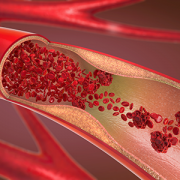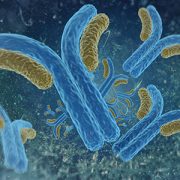dnDSA and African American ethnicity linked with thickening of blood vessels after kidney transplant

Emerging evidence links dnDSA with increased risk of accelerated systemic hardening of the arteries (arteriosclerosis) and major cardiac events in adult organ transplant recipients. However, this phenomenon has not been studied extensively in children who receive kidney transplants.
Children who developed anti-human leukocyte antibodies against their donor kidney, known as de novo donor-specific antibodies (dnDSA), after kidney transplant were more likely to experience carotid intima-media thickening (CIMT) than those without these antibodies, according to preliminary research presented May 7, 2019, during the 10th Congress of the International Pediatric Transplant Association.
dnDSA play a key role in the survival of a transplanted organ. While human leukocyte antibodies protect the body from infection, dnDSA are a major cause of allograft loss. CIMT measures the thickness of the intima and media layers of the carotid artery and can serve as an early marker of cardiac disease.
Emerging evidence links dnDSA with increased risk of accelerated systemic hardening of the arteries (arteriosclerosis) and major cardiac events in adult organ transplant recipients. However, this phenomenon has not been studied extensively in children who receive kidney transplants.
To investigate the issue, Children’s researchers enrolled 38 children who had received kidney transplants and matched them by race with 20 healthy children. They measured their CIMT, blood pressure and lipids 18 months and 30 months after their kidney transplants. They monitored dnDSA at 18 months and 30 months after kidney transplant. The transplant recipients’ median age was 11.3 years, 50 percent were African American, and 21% developed dnDSA.
“In this prospective controlled cohort study, we compared outcomes among patients who developed dnDSA with transplant recipients who did not develop dnDSA and with race-matched healthy kids,” says Kristen Sgambat, Ph.D., a pediatric renal dietitian at Children’s National who was the study’s lead author. “Children with dnDSA after transplant had 5.5% thicker CIMT than those who did not have dnDSA. Being African American was also independently associated with a 9.2% increase in CIMT among transplant recipients.”
Additional studies will need to be conducted in larger numbers of pediatric kidney transplant recipients to verify this preliminary association, Sgambat adds.
10th Congress of the International Pediatric Transplant Association presentation:
- “Circulating de novo donor-specific antibodies and carotid intima-media thickness in pediatric kidney transplant recipients.”
Kristen Sgambat, Ph.D., pediatric renal dietitian and study lead author; Sarah Clauss, M.D., cardiologist and study co-author; and Asha Moudgil, M.D., Medical Director, Transplant and senior study author, all of Children’s National.






